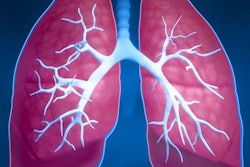
Online lung cancer screening patient education materials aren't as helpful as they need to be because they are written at a level beyond the general population's understanding, according to a study published in the July issue of the American Journal of Roentgenology.
The fact that these materials aren't written for general patient understanding contributes to a "knowledge gap" that prevents patients from developing health literacy, wrote a team led by Dr. David Hansberry, PhD, from Thomas Jefferson University.
"Readability is a measure of the difficulty with which text can be read and understood and is frequently correlated with health literacy," the group wrote. "Previous studies in health literacy and readability have found a large proportion of patient education materials written ... beyond the comprehension level of the mean American."
Both the U.S. National Institutes of Health (NIH) and the American Medical Association (AMA) recommend that patient education information be written at a third- to seventh-grade level. Hansberry's group sought to evaluate the readability of lung cancer screening information by assessing articles found on patient education websites (AJR, July 2018, Vol. 211:7, pp. W42-W46).
The authors performed a Google search for the terms "pulmonary nodule," "radiation," "low-dose CT," and "lung cancer screening," downloading the first 20 resources and analyzing them using 10 readability scales. A total of 80 articles were included in the study.
The articles were written at a mean grade level of 12.6, the group found. Of all the articles, 62% required a high school education to understand and 22.6% required at least a college degree. Articles about radiation required the highest reading comprehension, at a 13.6-grade mean readability level, while lung cancer screening articles required the lowest, at a 10.8-grade level. Materials about pulmonary nodules and low-dose CT were written at mean grade levels of 12.5 and 13.4, respectively.
Only 2.5% of the articles analyzed fit the NIH and AMA recommendations regarding patient education materials.
"Although online healthcare education materials are widely available and used, these resources are inadequate if they are written beyond the comprehension level of the intended audience," the authors wrote.
The study demonstrates that there's work to be done to improve the adequacy of patient education materials for lung cancer screening, Hansberry and colleagues concluded. This is especially true because patients with less education are often the ones who would benefit the most from screening, as they tend to have higher risks of lung cancer, higher mortality rates from lung cancer, and lower rates of smoking cessation, they added.
"It is imperative that patient education materials be written with the appropriate audience in mind and at a readability level that corresponds to the NIH and AMA recommendations," the group wrote. "Higher health literacy among patients can improve the rates of lung cancer screening and potentially improve outcomes."



















